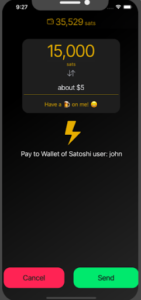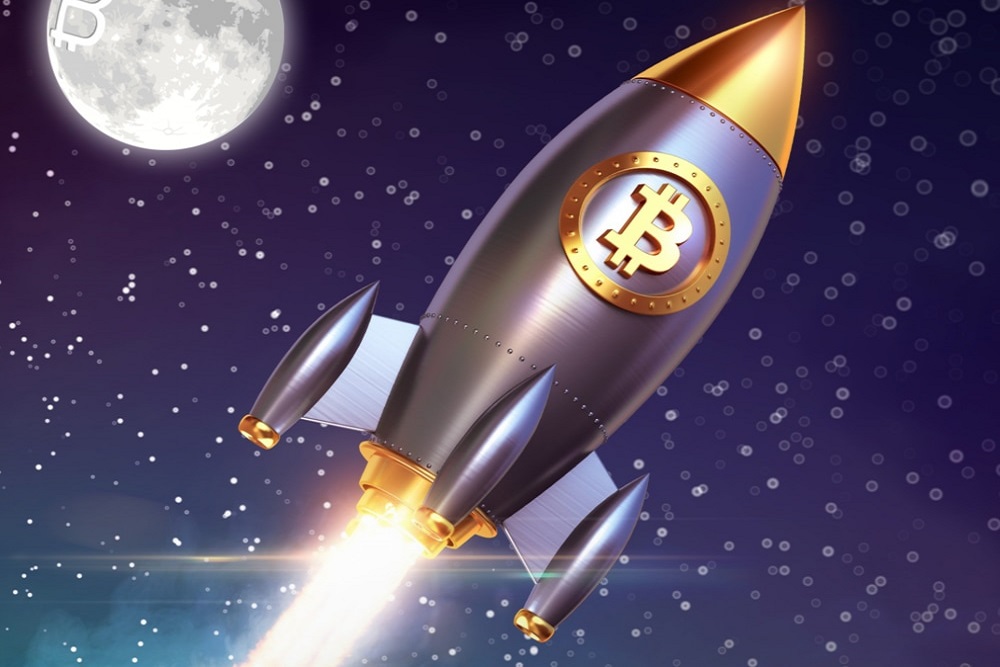Bitcoin’s perennial issue is scalability, which the community has planned to resolve with layer 2 (L2) solutions such as the Lightning Network, in contrast with other blockchains designed to be more scalable from their genesis.
In 2017, a major attempt to increase Bitcoin’s block size would have made Bitcoin more scalable on the base chain, but that would have also compromised Bitcoin’s decentralization for good. The Bitcoin community split between big and small blockers, a battle leading to a blockchain fork, and Bitcoin Cash (BCH) was created with 8MB blocks against ~1MB of Bitcoin BTC’s blocks at the time.
In the last couple of years, usage of the Lightning Network has grown considerably, with the number of nodes spiking from an average of 8500 active computers running the network in 2021 to 18,000 recorded in May 2023.

The number of open channels went from roughly 33,500 in 2021 to 72,000 in 2023.

One of the best features of the Lightning Network is the instant payments at very little fees. It has the potential to process 1M transactions per second (tps) against a potential maximum of 65,000 processed by Visa.
What is the Bitcoin Lightning Network?
Bitcoin Lightning Network is a layer 2 solution that runs on thousands of nodes worldwide. It’s a payment protocol built on top of the blockchain base layer to facilitate efficient and speedy micro-transactions at lower costs without congesting the network. It works as a channel opened between two parties who can pay or receive payment from one another. As an L2 payment protocol, it uses the base layer only for dispute resolution or distribution of capital into channels.
The Lightning Network allows users to transact easily between them at a low fee without overcrowding the underlying blockchain or affecting the security model of the base layer.
By offloading transactions to the Lightning Network’s L2 blockchain, the layer 1 (L1) Bitcoin blockchain can move faster. The payment protocol employs smart contracts to establish off-blockchain channels between two users who can transfer funds almost instantly.
Users do not necessarily need to open channels whenever they need to send payments to a new recipient. If the recipient has used the Lightning Network before, then the network already recognizes them and transfers the money automatically.
In reality, when we set up a Bitcoin Lightning Network wallet and load it with some BTC or SATS — or satoshis, the smaller unit of bitcoins — we are technically opening a channel and are ready to pay or receive money. The protocol uses a routing service that instantly and efficiently transfers money, even if the user has never exchanged money with anyone before.
Therefore, for instance, if we just set up a Lightning wallet, loaded it with money, and want to pay for a coffee to a Lightning-accepting merchant, we can do that right away just by scanning the merchant’s code.
Users can close their payment channels and settle their final balances on the core blockchain at any time. Only the channel’s opening and closing transactions are recorded on the L1 blockchain, so it cannot get congested by Lightning transactions.
The Lightning Network is increasingly used for tipping purposes due to its instantaneous settlement virtually free of charge. Twitter implemented Lightning Network tips in 2021 but discontinued them after just over a year because of low usage.
El Salvador, which made Bitcoin legal tender in 2021, launched Chivo, a Lightning-compatible, government-developed wallet designed to enable seamless cross-border payments.
In the last couple of years, many Bitcoin and cryptocurrency exchanges started to implement Lightning Network payments, including Coinbase and Kraken, among the first to provide its users with the payment service.
Who Invented Bitcoin Lightning?
Researcher Joseph Poon and developer Thaddeus Dryja invented the Lightning Network in 2016 to resolve Bitcoin and other blockchains’ scalability problems.
On January 14, 2016, they published the Lightning Network white paper and funded Lightning Labs — a San Francisco-based software development company — alongside Elizabeth Stark, who became the public representative of the Lightning Network with her consistent presence at Bitcoin and blockchain conferences and public events.
How to Send and Receive Bitcoin on Lightning Network (in Seconds)
There are many popular Lightning wallet options, which can be “custodial,” such as Strike and Wallet of Satoshi and manage your private keys, or “non-custodial,” like Muun, Breez, Phoenix, and Zap, that allow users to keep custody of their private keys.
These wallets offer intuitive interfaces to make Lightning payments extremely easy and fast to use. Here’s a step-by-step guide to using the Wallet of Satoshi, which you can quickly download and install for free from the App Store or Google Play.
- Top up your wallet by sending BTC from an exchange or by buying it directly from the app;

- To pay a merchant, you simply need to scan their QR code and confirm payment;

- To receive payments, click on “Receive” and allow the sender to scan your QR code;

The Wallet of Satoshi is a zero-configuration custodial wallet that focuses on providing simplicity and a smooth user experience. All Bitcoin Lightning wallets have similar setups and are very straightforward to use.
FAQ
Does the Lightning Network use a native token?
The Lightning Network can be used as a layer 2 on different blockchains. In either case, it will use the coin — or token — of the underlying blockchain. Therefore it will use Bitcoin (BTC) on the Bitcoin blockchain and its smaller units, satoshis (SATS); it will use Litecoin (LTC) on the Litecoin blockchain, and so on.
Can Lightning payments be received while the device is offline?
Both the sender of the payment and the receiver must be online to execute a Lightning Network transaction. Furthermore, all the routing nodes that may be necessary to run the transaction must be online too. This should not be an issue in the era when we are always online, especially with the use of smartphones. The wallet executing the payment is also required to be running until the payment is settled, but it can certainly be turned off after.
What risks are there in the Lightning Network?
While the Lightning Network is increasingly being used for instant payments, its software is still considered in beta mode and may include bugs that could result in a loss of funds. For this reason, it’s never recommended to deposit too many funds in a Lightning wallet. Instead, people may use it for everyday transactions like buying coffee, shopping, or as a tipping service.
Are Lightning Network payments anonymous?
Lightning payments are more anonymous than on-chain transactions. The reason is not far-fetched. All layer 1 payments appear on the publicly available ledger, while Lightning payments are not announced to the entire network. The separation between blockchain transactions and lightning payments secures lighting users’ privacy since there is no potential risk of privacy leaks from the funding transactions and vice versa.
- Crypto Price Update July 24: BTC Maintains $66K, ETH at $3.4K, XRP, TON, and ADA Rallies
- Bitcoin Falls to $65K as Mt. Gox Transfers $2.8 Billion BTC to External Wallet
- News of Marathon Digital’s $138 Million Fine for Breach of Non-Disclosure Agreement Triggers a Bearish 2.5% of Its MARA Stock
- Are $530M Bitcoin ETF Inflows a Blessing or Caution?
- Metaplanet Teams with Hoseki for Real-Time Bitcoin Holdings Verification
- Building Secure Blockchain Systems: An Exclusive Interview with ARPA and Bella Protocol CEO Felix Xu
- Building The “De-Facto Crypto Trading Terminal”: An Exclusive Interview with Aurox CEO Giorgi Khazaradze
- Building a New Global Financial System: An Exclusive Interview With Tyler Wallace, Analytics Head at TrustToken
- “Solana is the Promised Land for Blockchain” — An Exclusive Interview with Solend Founder Rooter
- El Salvador: Where The Bitcoin Revolution Begins With A Legal Tender

 Why Trust Us
Why Trust Us







